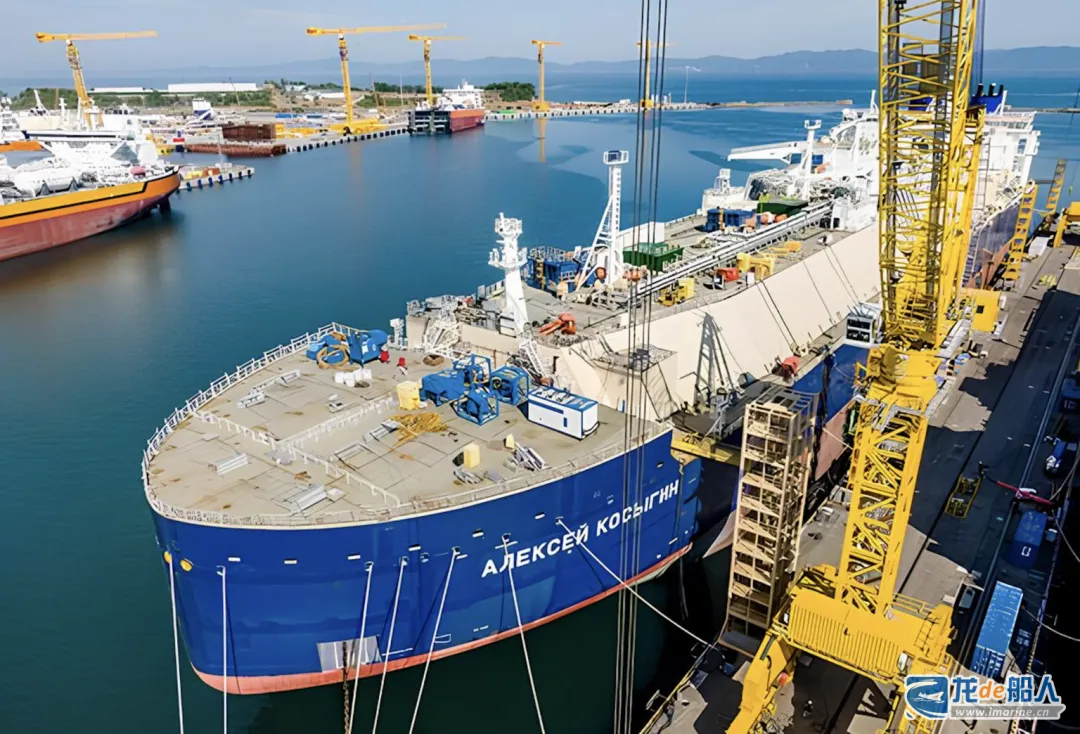On December 25, the first ice-class liquefied natural gas (LNG) carrier built by a Russian shipyard began sea trials. This is part of Russia’s efforts to boost its global LNG market share under U.S. sanctions.

The LNG carrier is named “Aleksey Kosygin” after Soviet statesman Alexei Nikolayevich Kosygin. “The Aleksey Kosygin was ordered by the Russian state-owned shipping company Sovcomflot at Zvezda and will serve the Arctic LNG 2 project upon delivery.
The Arctic LNG 2 project has been repeatedly delayed by escalating Western sanctions. Sovcomflot has been working to build ice-breaking LNG carriers to transport gas in winter, but so far, no gas from Arctic LNG 2 has been shipped.
21 Arc7 LNG carriers planned in partnership with Korean shipyard
The Arctic LNG 2 project is initially planned to be a fleet of 21 Arc7 LNG carriers capable of transporting natural gas through the Northern Sea Route year-round. The LNG carriers will be approximately 300 meters long and 48.8 meters wide, and are designed for year-round independent voyages along the orthern Sea Route, where they will be able to pass through ice up to 1.7 meters thick, with their powerful ice-breaking capabilities.
Fifteen of the 21 ice-class LNG carriers were completed at the Zvezda with hull sections, equipment and technical support provided by Samsung Heavy Industries; the other six were built by Hanwha Ocean (formerly Daewoo Shipbuilding & Marine Engineering, DSME).
Between 2019 and 2022, Samsung Heavy Industries has been awarded a cumulative total of 22 design contracts (not construction contracts) from Zvezda, including the supply of segments, equipment and technical support for 15 ice-class LNG carriers and seven shuttle tankers, with a total contract value of $4.2 billion. Later, due to Western sanctions, Samsung Heavy Industries announced that it would stop providing services for the 10 ice-class LNG carriers and 7 shuttle tankers. In the end, Samsung Heavy Industries delivered only five LNG hulls for Zvezda.
Another six ice-class LNG carriers were originally planned to be built by DSME. Three of these were ordered by Sovcomflot from DSME through Russian owners (Elixon, Azoria, Glorina) in October 2020, with a total order value of approximately $850 million, and were originally scheduled to be completed by July 31, 2023; the other three were ordered by Japan’s Mitsui O.S.K. Lines (MOL). Again, DSME announced in 2022 that it had canceled the shipbuilding contracts for these LNG carriers due to the inability to receive progress payments from Russia as a result of Western sanctions, and plans to resell Sovcomflot’s three completed LNG carriers.
Zvezda can only complete five ice-class LNG carriers by itself
It is understood that the hulls of the five LNG carriers delivered by Samsung Heavy Industries in the past few years are still in different stages of construction, and it is a great challenge for Zvezda to complete these five vessels independently.
Back to the “Aleksey Kosygin” at the beginning of this article, if it passes the sea trial smoothly, the vessel is expected to be put into use in 2025. As one of the five vessels delivered by Samsung Heavy Industries, the core module of the “Aleksey Kosygin” was completed by Samsung Heavy Industries. As early as October 2021, the main hull of the vessel (including the liquid cargo tank) was towed to Zvezda. The liquid cargo containment system uses French GTT’s technology, and the propulsion system is provided by MAN and Wärtsilä.
The next LNG carrier expected to be delivered by Zvezda will be the Pyotr Stolypin, which is estimated to be about the same level of completion as the Aleksey Kosygin when Western companies leave Russia. It is expected that the vessel will be commissioned in a few months. It’s worth noting that the two unfinished LNG carriers, as well as Zvezda itself, are already on the U.S. sanctions list.
The future of the remaining 3 LNG carriers is less certain, the key to which is GTT’s membrane containment system. When GTT pulls out of Zvezda in January 2023, it was reported to have completed work on only the first 2 vessels.
Russia has been developing its own containment systems to reduce its dependence on Western technology. in 2022, Russia’s Segezha was awarded GTT’s Mark III certification for its membrane containment systems. Sources say Segezha has developed its own membrane insulation board “tanker plywood”, which may help Zvezda to complete the liquid cargo tanks in the remaining ice-class LNG carriers.


